
The city of Medina revolves on Al Masjid a Nabawi, better known as the Prophet’s Mosque, which was built by the Prophet himself and houses his grave. After the Hijrah (migration) from Makkah in 622 A.D., the Prophet Muhammad resided and taught in Medina. This year is so significant in Islamic history that it serves as the start of the Islamic calendar. Although it is commonly referred to as Medina in English, the city’s full name is Al Medina Al Munawwarah, which means “the Enlightened City.” For many Muslims, visiting Medina is a lifelong desire because of the city’s significance in the life of the Prophet Muhammad.

Madinah is also referred to as Madinah An-Nabi (The Prophet’s City), Madinah Al-Munawwarah (The Enlightened City), and Medina. Yathrib was the old name for the city. Yathrib has no meaning; it was given to the city by its inhabitants (which is now Madinah). Yathrib was an agricultural town in the arid desert topography of the Arabian Peninsula, located 450 kilometers (200 miles) north of Makkah. Yathrib became a stopping station for caravans travelling through thanks to its abundant water supply, and its residents were highly involved in trading. Three important Jewish tribes inhabited the city by the fourth century, with some lasting until the seventh century AD.
The journey from Yathrib to Medina
The city was formerly known as Yathrib before the establishment of Islam and was renamed Medina in honor of Muhammad’s prophethood and death there. It is the location of hijrah (migration), the place where the Muhaajireen and Ansaar came together. And it is the centre of jihad, from which the armies marched forth and campaigns were launched, from which lands were conquered, the religion spread and shirk and its people were defeated.
What were the opinions of Islamic scholars?
In it most of the verses on rulings and laws were revealed. When the Prophet (blessings and peace of Allah be upon him) conquered Makkah, he did not settle there; rather he returned to Madinah, the city to which he had migrated, and lived there until he died and was buried in that city.
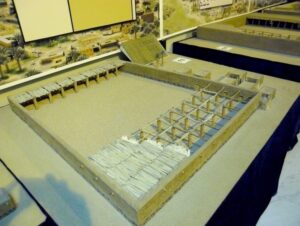
Al-Bukhaari (3778) and Muslim (1059) narrated that Anas (may Allah be pleased with him) said: The Ansaar said on the day of the conquest of Makkah, when (the Prophet (blessings and peace of Allah be upon him) gave (some of the booty) to Quraysh: By Allah, this is strange. Our swords are still dripping with the blood of Quraysh, and our spoils have been given to them! News of that reached the Prophet (blessings and peace of Allah be upon him), so he summoned the Ansaar and said: “What is this that I have heard about you?” They were people who never told lies, so they said: It is what you have heard. He said: “Does it not please you that the people are going back to their houses with worldly gains whilst you are going back to your houses with the Messenger of Allaah? If the Ansaar were to follow a valley or mountain pass, I would follow the valley or mountain pass of the Ansaar.”
An-Nawawi (may Allah have mercy on him) said:
With regard to it superseding all other cities, they mentioned two meanings, the first of which is that it was the centre for the armies of Islam in the beginning, and from it other cities were conquered and their wealth and captives seized. The second meaning is that it superseded and its food and provision came to it from the conquered cities, from which booty was brought to it.
End quote from Sharh an-Nawawi ‘ala Muslim (9/154)
al-Bukhaari (1876) and Muslim (147) narrated from Abu Hurayrah (may Allah be pleased with him) that the Messenger of Allah (blessings and peace of Allah be upon him) said: “Faith will retreat to Madinah as a snake retreats to its hole.”
Mirqaat al-Mafaateeh (1/243)
Madinah is the gathering-point of the Muslims in the beginning and at the end.
An-Nawawi said:
“Faith will retreat to Madinah” – what is meant is that this is how faith is in the beginning and at the end, because at the beginning of Islam, everyone whose faith was sincere and whose Islam was valid came to Madinah, either as a muhaajir (migrant) coming to settle there, or out of a longing to see the Messenger of Allah (blessings and peace of Allah be upon him), and to learn from him and be near to him; then after that, at the time of the caliphs, people did the same, so they came to learn about the straight path from them and follow the example of the majority of the Sahaabah (may Allah be pleased with them) living there; then after that, they came to learn from the scholars of Madinah who were a shining lamp of that era, and the imams of guidance, to learn Islam and the Sunnah of the Messenger of Allah (blessings and peace of Allah be upon him) that the Sahaabah narrated to subsequent generations…. Therefore everyone who was steadfast in faith and at ease with it would travel there.
End quote from Sharh an-Nawawi ‘ala Muslim (2/177)
In it is the valley of al-‘Aqeeq, which is a blessed valley. Al-Bukhaari (1534) narrated from Ibn ‘Abbaas (may Allah be pleased with him) that he heard ‘Umar (may Allah be pleased with him) say: I heard the Prophet (blessings and peace of Allah be upon him) saying in the valley of al-‘Aqeeq: “Last night someone came to me from my Lord and said: ‘Pray in this blessed valley, and say: (I intend to do) ‘Umrah and Hajj.’”
No one intends ill towardsthe people of Madinah but Allah will destroy him.
Al-Bukhaari (1877) and Muslim (1363) narrated that Sa‘d (may Allah be pleased with him) said: I heard the Prophet (blessings and peace of Allah be upon him) say: “No one plots against the people of Madinah but Allah will cause him to dissolve as salt dissolves in water.”
Whomever Allah blesses by causing him to live in Makkah, congratulations to him; and whomever Allah blesses by causing him to live in Madinah, congratulations to him; and whomever Allah blesses with piety – no matter where on Allah’s earth he lives – congratulations to him. And Allah knows best.
Returning to the past
Islam became the dominant religion, and Muslims gained authority in Medina. Musab (RA) thereafter returned to Makkah. The Prophet’s pledge was taken by 70 men and 2 women from Ansar in the second pledge (PBUH). On the 13th year of his prophesy, May 16, 634 AD, he traveled to Medina on Monday, Rabi-ul-Awwal 12. ‘Yathrib’ has been renamed Medina since that day. The small and beleaguered Muslim group was able to establish itself, administer their own community, and implement religious life components that they had been unable to achieve under Makkan persecution. Madinah prospered and grew to become the heart of the Islamic nation.
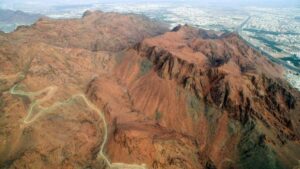
Medina developed rapidly until the Umayyad dynasty moved the caliphate’s seat to Damascus in 661. Medina was thus relegated to the status of a provincial town, governed by governors appointed by distant caliphs. The city’s riches was eroded by local fighting. Medina was threatened by lava flow from the last eruption of Harrat Rahat, Saudi Arabia’s largest lava field, in 1256. In 1517, it fell under the Ottoman Turks’ control.


Medina was a city in the Ottoman Turkish Empire, with the Hashemite clan – the Emirs of Mecca, also known as sharifs — ruling locally. Ali bin Hussein was the chief of the Hashemite clan who rose against the Caliph in Constantinople, while Fakhri Pasha was the Ottoman administrator of Medina. It was taken by the Wahhabis in 1804, but Muhammad Ali reclaimed it for the Turks in 1812. Husayn ibn Ali’s soldiers, who revolted against Turkey during World War I, conquered Medina. Hussein’s soldiers besieged the city for two years and seven months, from 1916 to 1919. There were 139 different varieties of dates growing in the area in 1920. The city is encircled by double walls with bastions on either side and nine entrances.


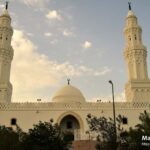
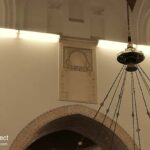
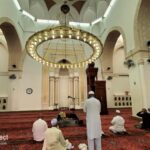
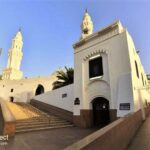
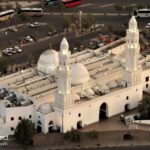
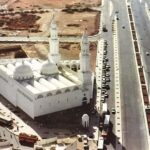

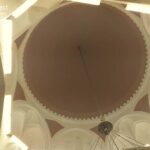
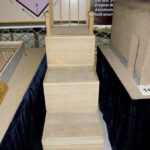
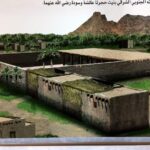
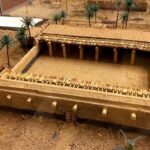

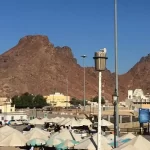



One comment on “Explore the World: City of Medina, Saudi Arabia”
Asma'u Bello Abubakar
April 12, 2022 at 3:20 pmMasha Allah.